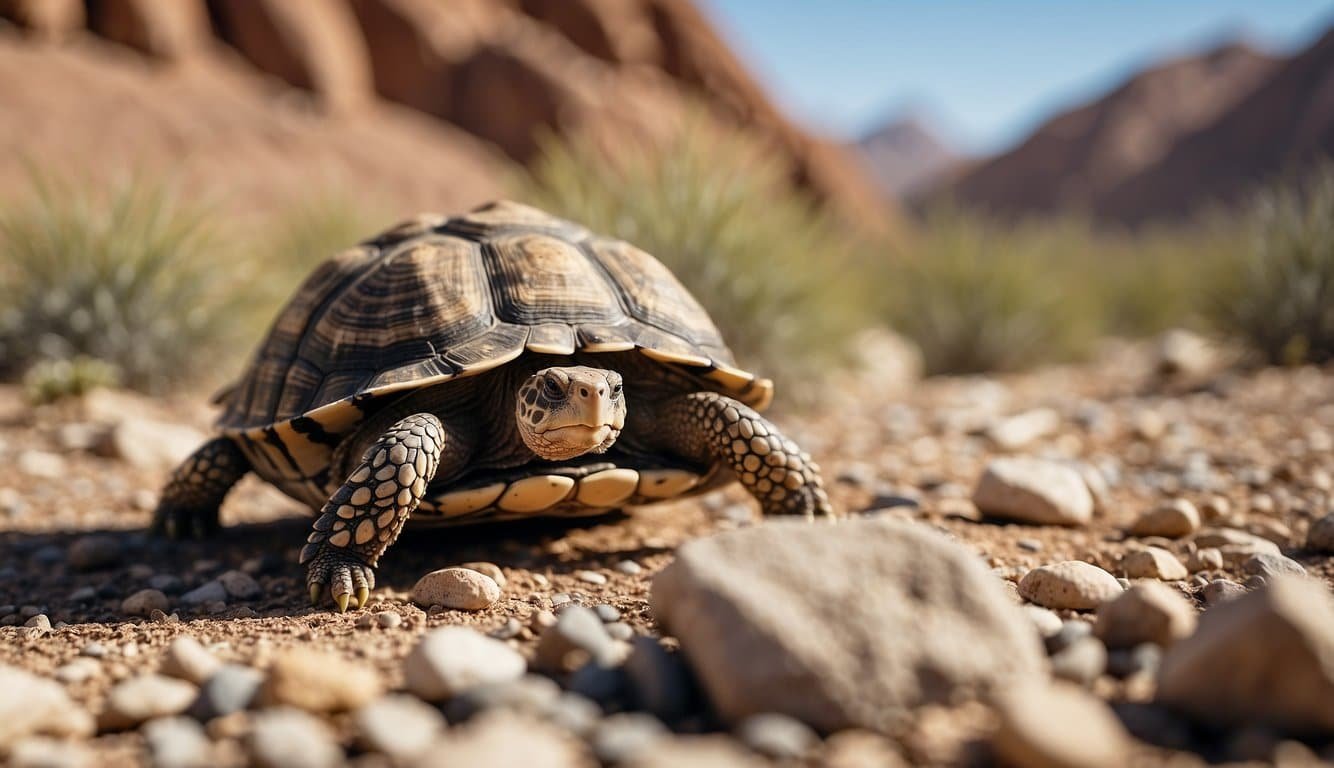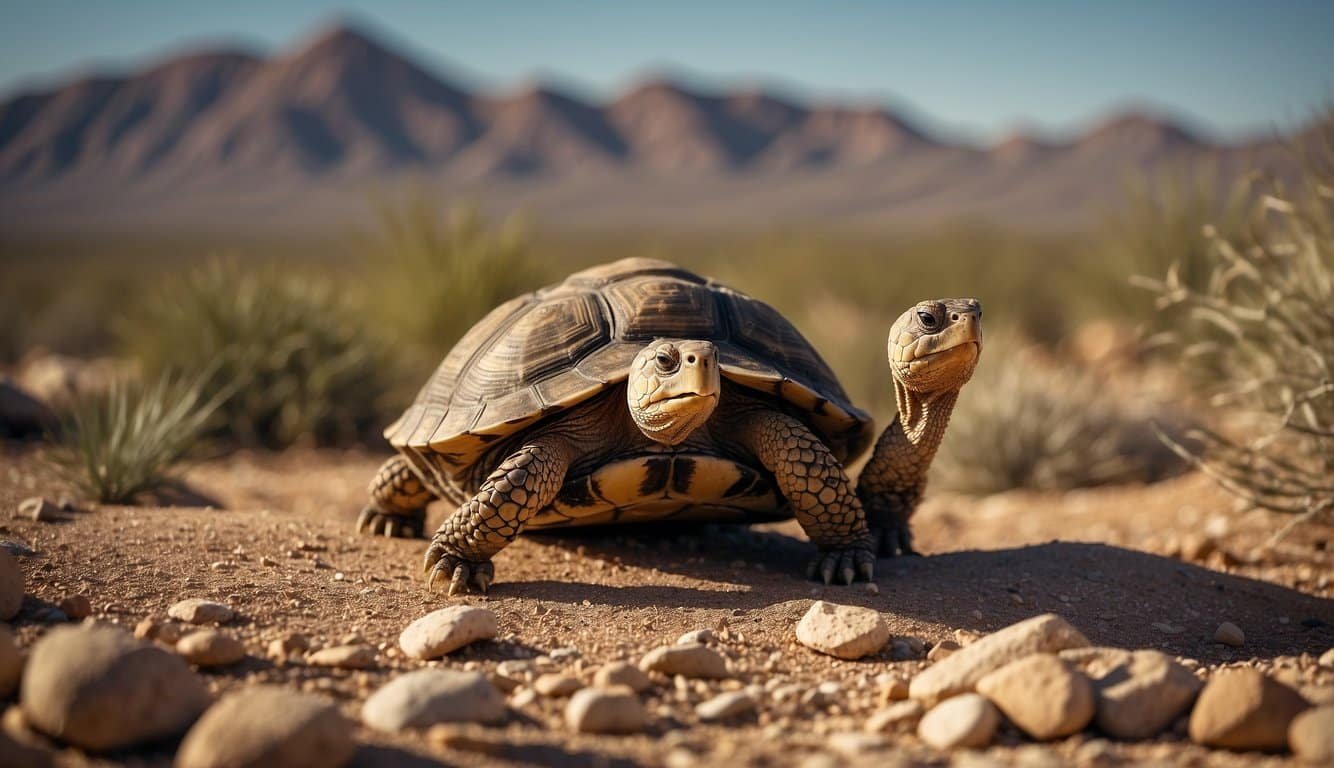Desert Tortoise Overview
The desert tortoise represents a fascinating group of land-dwelling reptiles endemic to the southwestern United States. Specifically belonging to the genus Gopherus, these creatures are known for their sturdy shells and relatively long lifespan.
Species Classification
- Common Names: Agassiz’s desert tortoise, Mojave desert tortoise
- Scientific Name: Gopherus agassizii
Often spotted in the Mojave and Sonoran Deserts, they have made these arid landscapes their home. The survival of these tortoises is a testament to their adaptability in these harsh climates.
Physical Characteristics
- Shell: High domed, providing protection
- Weight: Ranges from 8 to 15 pounds as adults
- Length: Typically between 9 to 15 inches
Habitat and Environment
They enjoy the spread of creosote bush scrub and desert washes within their habitats. The desert tortoise’s environment includes a variety of desert terrain, where they can spend up to 95% of their life underground to escape the heat.
Captive Desert Tortoise
Taking care of a captive desert tortoise can be a lengthy commitment, as they can live for more than 50 years with proper care. There are special considerations to remember, such as recreating their natural habitat for their well-being.
The desert tortoise may be a slow mover, but it’s quick to win the hearts of those who learn about this resilient reptile of Reptilia. They are a keystone species, contributing significantly to their ecosystems by creating burrows that provide shelter for themselves and other animals.
Behavior and Ecology

Desert tortoises display remarkable adaptations that allow them to thrive in arid environments. These behaviors are shaped by the harsh conditions they encounter, influencing their diet, water intake, and unique survival strategies.
Burrowing and Hibernation
Desert tortoises are proficient diggers, creating burrows that offer shelter from extreme temperatures and predators. These burrows are vital for thermoregulation, allowing tortoises to escape the searing heat of the desert sun and the cold of winter nights. During the winter months, when food is scarce and temperatures plummet, desert tortoises enter a state of hibernation or brumation, significantly reducing their metabolic activity to conserve energy until conditions improve.
Diet and Water
The diet of desert tortoises mainly consists of grasses, wildflowers, and other native plants. They are opportunistic foragers, taking advantage of the burst of plant life that follows seasonal rains. Water is a scarce commodity in their habitat, so they extract most of their water needs from the plants they consume. However, when fresh water is available, for instance in puddles formed from rain, they will drink to replenish their reserves. This water conservation strategy is key to their survival in the arid desert ecosystem.
Conservation and Threats
The desert tortoise carries the dual titles of “icon of the Mojave” and “indicator of ecological health”, but its existence is imperiled. As an endangered species, the desert tortoise’s survival is caught between the progressive threats of habitat destruction and an array of natural predators exacerbated by human actions.

Protective Measures
Conservation actions have been tailored to target the specific needs of the desert tortoise populations under the Endangered Species Act. These measures include habitat preservation and restrictions on land use changes. In particular, efforts are underway to mitigate the impacts of development within the tortoise’s habitat, which can lead to loss of food sources, water, and shelter. Additionally, the establishment of tortoise conservation areas aims to protect vital ecosystems while enabling researchers to monitor and manage these fragile populations.
Predators and Disease
Despite these protective measures, predation remains a significant threat. Common predators such as ravens, roadrunners, and burrowing owls pose a consistent threat to juveniles, whereas disease presents a more insidious menace to tortoises of all ages. Upper respiratory tract disease, for example, has the potential to critically reduce population numbers. Wildlife management strategies that involve reducing predator numbers and the spread of disease are thus pivotal in desert tortoise conservation efforts.

